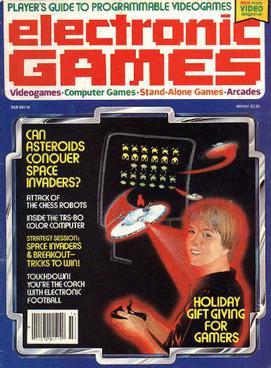As the electronic gaming industry continues to evolve at a breakneck pace, 2023 has proven to be a pivotal year marked by cutting-edge innovations and emerging trends that are reshaping the gaming landscape. From advancements in artificial intelligence and immersive virtual reality experiences to the rise of cloud gaming and the integration of blockchain technology, the sector is witnessing a dynamic shift that promises to enhance user engagement and redefine gameplay. In this article, we will explore the latest developments that are capturing the attention of gamers, developers, and industry analysts alike, highlighting how these trends are not only influencing game design and distribution but are also setting the stage for the future of entertainment. Stay tuned as we delve into the transformative forces driving the next iteration of electronic games and what they mean for players around the globe.
Table of Contents
- Emerging Technologies Shaping the Future of Gaming
- The Rise of Cloud Gaming and Its Impact on Accessibility
- Innovations in Game Design: User Experience and Immersive Environments
- Trends in Esports: Growth, Sponsorship, and Fan Engagement Strategies
- To Wrap It Up
Emerging Technologies Shaping the Future of Gaming

The gaming landscape is continually evolving, driven by emerging technologies that enhance user experience and interaction. One of the most exciting developments is virtual reality (VR), which immerses players in lifelike environments. As VR headsets become more affordable and accessible, game developers are crafting experiences that not only entertain but also engage players in unprecedented ways. Alongside VR, augmented reality (AR) is blurring the lines between the virtual and real worlds, with games like Pokémon Go paving the way for interactive gameplay that leverages real-world locations and elements.
In addition to VR and AR, the rise of cloud gaming is revolutionizing how players access and enjoy their favorite titles. By enabling users to stream games directly from the cloud, this technology eliminates the need for high-end hardware, allowing even low-spec devices to run graphically intensive games. Other critical advancements include artificial intelligence (AI), which is enhancing NPC behavior and creating personalized gaming experiences tailored to individual players. As these technologies continue to mature, they are set to redefine gameplay mechanics and storytelling, bringing forth a new era in electronic gaming.
The Rise of Cloud Gaming and Its Impact on Accessibility

The advent of cloud gaming has revolutionized the gaming landscape, providing a platform that transcends the limitations of traditional gaming hardware. Players can now access high-quality games on various devices including smartphones, tablets, and low-spec PCs, removing the previously necessary investment in expensive consoles or high-performance gaming rigs. This democratization of gaming technology means that even those in regions with limited access to the latest hardware can enjoy an immersive gaming experience, thereby bridging the accessibility gap. Key factors contributing to the rise of this trend include:
- Reduced Hardware Costs: Players can utilize existing devices without additional hardware upgrades.
- Wider Game Libraries: Cloud platforms often offer extensive access to various games, enhancing choice.
- Cross-Platform Play: Increased connectivity allows friends to play together, regardless of their devices.
Moreover, the business models associated with cloud gaming have also shifted to favor accessibility. Subscription services have gained popularity, allowing gamers to experience multiple titles for a monthly fee rather than a hefty upfront cost. This model encourages exploration of diverse genres and titles that players may not have considered before. A growing number of developers are now focusing on creating inclusive games that cater to various skill levels and preferences. The following table summarizes the major cloud gaming services currently shaping the market:
| Service | Key Features | Subscription Cost |
|---|---|---|
| Google Stadia | Instant play, 4K streaming | Monthly subscription + game purchases |
| NVIDIA GeForce NOW | Game library access, RTX technology | Free tier & subscription options |
| Xbox Cloud Gaming | Part of Xbox Game Pass, console-quality games | Included with Game Pass subscription |
Innovations in Game Design: User Experience and Immersive Environments
As the gaming landscape evolves, innovative game design is increasingly centered on enhancing user experience through immersive environments. Developers are leveraging advanced technologies like augmented reality (AR) and virtual reality (VR) to create more engaging worlds where players can interact and explore like never before. This shift towards hyper-realistic graphics and intuitive user interfaces not only elevates player immersion but also encourages emotional investment in the gameplay. Key innovations include:
- Procedural Generation: Dynamically creating game content to provide unique experiences with each playthrough.
- AI-Driven NPC Interactions: Enhancing non-playable character (NPC) behavior to respond intelligently to player actions.
- Multisensory Feedback: Utilizing haptic technology and spatial audio to deepen immersion and realism.
Moreover, developers are prioritizing accessibility, ensuring that their games cater to a wide range of players. By implementing customizable controls and auditory cues, they are making significant strides in inclusivity. This commitment to broadening access extends to ensuring that games resonate with diverse audiences. Some notable trends in accessibility and design include:
| Trend | Description |
|---|---|
| Colorblind Modes | Adjustments for color perception to aid players with visual impairments. |
| Subtitles and Transcripts | Providing text-to-speech options for the hearing impaired. |
| Customizable UI | Allowing players to tailor interfaces to meet their personal needs. |
Trends in Esports: Growth, Sponsorship, and Fan Engagement Strategies
The esports industry continues to experience remarkable growth, with an increasing number of players, fans, and investment opportunities. Major tournaments are drawing millions of viewers globally, with platforms like Twitch and YouTube serving as primary channels for live streams. This surge in viewership has attracted brands eager to tap into the lucrative gaming demographic. In fact, recent reports suggest that the global esports market is projected to reach $3.5 billion by 2025, signaling strong investment potential. This growth is not only in viewership but also in active participation, with a multitude of titles across various genres engaging competitive players from diverse backgrounds.
Sponsorship in esports has evolved into a multi-faceted endeavor, with brands not just investing financially but also engaging fans through interactive experiences. Companies are leveraging social media platforms to create dynamic engagement strategies, allowing fans to build communities around their favorite games and teams. Activities such as exclusive live events, in-game promotions, and interactive content are becoming increasingly popular. One emerging trend is the collaboration between gaming companies and traditional sports franchises, showcasing the blending of cultures and expanding the reach of sponsorships. Here’s a glimpse of recent sponsorship trends:
| Brand | Esports Team/Title | Engagement Strategy |
|---|---|---|
| Red Bull | Ninjas in Pyjamas | Live-streamed fitness challenges |
| Mercedes-Benz | League of Legends | Branded in-game vehicle skins |
| Intel | DreamHack | Interactive fan zones at events |
To Wrap It Up
the landscape of electronic gaming continues to evolve at a breakneck pace, driven by cutting-edge innovations and transformative trends. From the rise of cloud gaming and augmented reality to the integration of artificial intelligence and the growing importance of sustainability, the industry is not only embracing new technologies but also reshaping how players interact with their virtual worlds. As we move forward, it will be crucial for stakeholders—developers, gamers, and investors alike—to stay attuned to these developments. The future of electronic games promises to be as dynamic and engaging as ever, setting the stage for experiences that will redefine entertainment in the years to come. Stay informed, as the next wave of breakthroughs is just around the corner.



